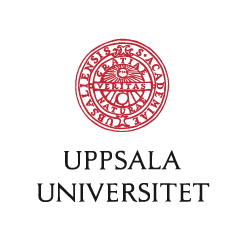Next week a new academic year for the Masters program in Digital Humanities starts. The first year students at the program start their first course Introduction to Digital Humanities. During the course they will be welcomed by Olle Sköld, who is coordinator for the program. The programs first year will initially be held in a […]
Continue readingPage 3 of 8
This is a guest blog post by programme director Olle Sköld that was written at the beginning of the summer of 2020 . The academic year is at an end and it is time for some well-earned time off for both students and faculty at the DH master’s program at Uppsala University. The past two […]
Continue readingLast week I got the opportunity to sit down with Ina-Maria Jansson over Zoom, Phd-student and course coordinator for the course Information Mediation and User Perspectives in the Digital Era, that ended a few weeks ago. What is your research background and how did you find Digital Humanities as an educational and research subject? With […]
Continue readingToday I participated in a lab in the course Distant reading over Zoom about Data Curation headed by Karl Berglund. In the data curation lab the students will learn how to automatically manage and manipulate digital texts in different ways. We will depart from examples of Python code in Jupyter Notebook and, among other things, […]
Continue readingYesterday the last course of the semester started for the students of the Digital Humanities program. It is called Distant reading and is headed by researcher and librarian Karl Berglund. The core of the course is that it introduces and discusses tools and methods for what is known as distant reading; i.e., computer-supported and quantitative analyses […]
Continue readingTwo weeks ago the students had a laboratory exercise that was presented over Zoom and was part of the course Information Mediation and User Perspectives in the Digital Era. The Laboratory was headed by Ina-Maria Jansson. The aim of this laboratory was to develop skills to describe, critically analyze and understand digital information platforms from […]
Continue readingThe spring term for the Digital Humanities students started off with a courses called Visual Analysis: Materiality and Digital Humanities and headed by art historian and media scholar Anna Orrghen. I took an opportunity to ask her a few questions about the course and her involvement in the research field of Digital Humanities. What is […]
Continue readingLike all countries in Europe and the World, Sweden has been deeply affected by the outbreak of Covid-19. This has of course also affected higher edudation in Sweden, that has now been recommended by the Swedish government to switch over to online education tools. For the students at the Master program in Digital Humanities this […]
Continue readingThis is a guest post by Daniel Löwenborg, researcher and senior lecturer at the Department of Archaeology and Ancient history. Digital Archaeology Archaeology has a long tradition of working interdisciplinary and have been using digital technology extensively, especially since GIS (geographical information systems) became more widely available in the 1990s. Since archaeological information is inherently […]
Continue readingToday the students start one of their most important courses in the Masterprogramme in Digital Humanities: Theories and Methods in Digital Humanitites. Course Coordinator is Olle Sköld and Nadya Charapan. Olle is also the programme coordinator for the programme as a whole. You can read more about Nadya on the blog here. After completing the […]
Continue reading